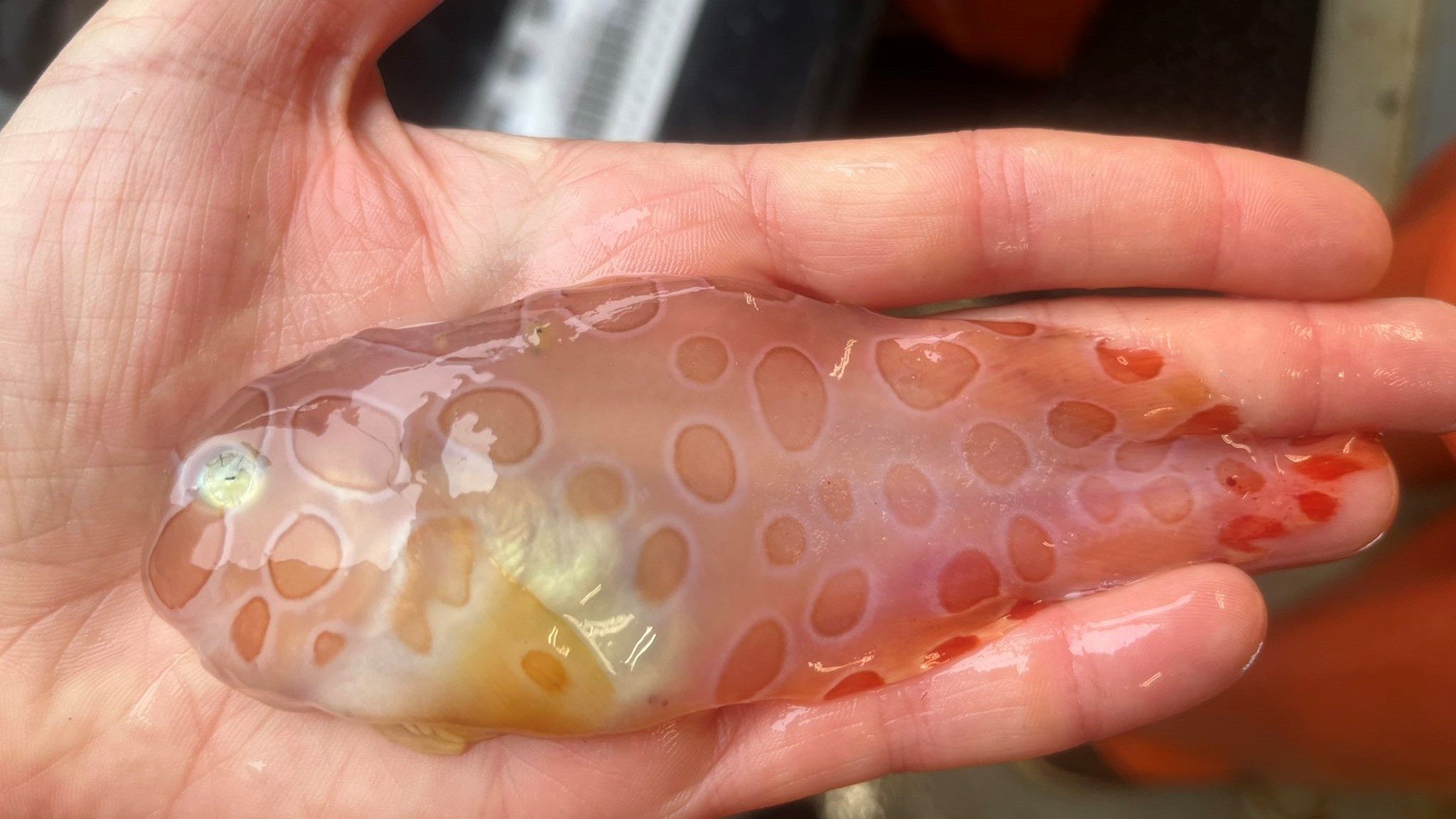Bizarre translucent 'Jell-O fish' pulled up from icy depths in Alaska
The gelatinous fish also has a strange suction cup on its belly.

A bizarre-looking translucent, gelatinous fish with an unusual suction cup on its belly made a surprise appearance for a group of scientists who were studying the deep sea near Alaska.
The odd animal is a blotched snailfish (Crystallichthys cyclospilus), a seafloor-dwelling creature that lives exclusively in the North Pacific and can survive more than 2,723 feet (830 meters) below the ocean surface. Researchers from the National Oceanic and Atmospheric Administration (NOAA) stumbled upon this squishy weirdo while trawling off the coast of the Aleutian Islands in Alaska as part of a routine survey of the deep sea ecosystem there. On June 19, NOAA scientist and expedition crew member Sarah Friedman shared a photo of the blotched snailfish on Twitter.
The fish's body is "very gelatinous" and felt like "holding a lump of Jell-O," Friedman told Live Science in an email. "This is thought to be an adaptation to maintain neutral buoyancy and efficiently swim while coping with the crushing pressure of the deep sea," she added.
The team was excited to show off the peculiar specimen online so that more people could see the fish for themselves. "They live in relatively remote locations and at deeper depths, so the average person will never encounter this species," Friedman said. But although such fish are uncommon, the researchers did find "four or five" different blotched snailfish specimens during the trip, she added.
Related: Translucent jellyfish, with fish trapped inside it, washes up on UK beach
Blotched snailfish have bodies that are almost entirely see-through — apart from their eyes, stomachs and dark spots on their skin. This adaptation helps them to stay hidden from predators. "Many animals that live at deeper oceanic depths are translucent," Friedman said. It enables them to "blend in with the dark background in a habitat with limited light availability and few structures to hide behind."
Like several other species of snailfish, blotched snailfish have modified fins on their bellies that form a suction cup. "This allows them to easily attach to rocks and corals on the ocean floor and avoid expending the energy to constantly swim around, particularly in strong currents," Friedman said.
Sign up for the Live Science daily newsletter now
Get the world’s most fascinating discoveries delivered straight to your inbox.
Overall, little is known about what these snailfish get up to in the deep ocean. "Snailfish are an incredibly enigmatic and diverse group of fishes, with species that inhabit a wide range of environments, from tidepools to the deepest trenches of the ocean," Friedman said. "But not much is known about the ecology of deeper snailfish species," although scientists do know that they prey on small invertebrates that crawl along the seafloor, she added. (There are more than 400 species of snailfish globally.)
The team also found a number of other interesting marine specimens during the trip, including a giant sea spider (which isn't actually a true spider); an anglerfish with massive pointed teeth and a luminous barb for luring prey; and a barreleye fish, which can swivel its eyes to peer through the top of its translucent head.
However, the main goal of these trawls is not to find rare species. Rather, the surveys are carried out to assess the overall health of the ecosystem, particularly regarding the populations of commercially targeted species. "This research is essential to sustainably manage fish and crab species that support commercial, recreational and subsistence fisheries and Alaska coastal communities," Friedman said.
Originally published on Live Science.

Harry is a U.K.-based senior staff writer at Live Science. He studied marine biology at the University of Exeter before training to become a journalist. He covers a wide range of topics including space exploration, planetary science, space weather, climate change, animal behavior and paleontology. His recent work on the solar maximum won "best space submission" at the 2024 Aerospace Media Awards and was shortlisted in the "top scoop" category at the NCTJ Awards for Excellence in 2023. He also writes Live Science's weekly Earth from space series.










